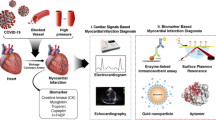Abstract
Production of reactive oxygen species (ROS) by macrophages derived from blood monocytes of healthy donors (MPN) and patients with ischemic heart disease (IHD) (MPIHD) before, during, and after their incubation with low-density lipoprotein (LDL) isolated from blood plasma of healthy donors (LDLN) and patients with a high cholesterol level (LDLH) was investigated by the method of luminol-dependent (spontaneous) and stimulated chemiluminescence (CL) using opsonized zymosan (OZ) or phorbol-12-myristate-13-acetate (PMA) as the CL stimulators. It was shown that proper, luminol-dependent, and zymosan-or PMA-stimulated chemiluminescence of MPIHD was 1.4-, 1.8-, 2.7-, and 1.6-fold higher than the same types of chemiluminescence of MPN, respectively, (p<0.05–0.01). Although the effect of OZ on MPN and MPIHD was more potent than that of PMA (by 4.3- and 3.2-fold, respectively), but it appeared in 2.5–3.0 times slower than that of PMA. LDLN and LDLH incubated with MPN for the first 15 and 60 min caused the 1.4- and 2.5-increase of the luminol-dependent CL of MPN; the same treatment of MPIHD did not influence ROS production by these cells. Repeated increase in the OZ-stimulated CL of MPN was also observed after preincubation for 15–180 min with LDLN and LDLH followed by LDL removal, subsequent MPN washing and addition of Hanks solution and OZ; the repeated increase in OZ-stimulated CL of MPN was only observed after incubation with LDLH than with LDLN. No increase of CL was observed in experiments with MPIHD. Thus, more intensive chemiluminescence of macrophages obtained from blood of patients with IHD suggests their in vivo stimulation. LDLN and LDLH may cause both primary and secondary (after preincubation) stimulating effect on CL of MPN but not of MPIHD. Thus, the analysis of macrophage chemiluminescence is a sensitive test for evaluation the degree of macrophage stimulation; it may be effectively used for monitoring of effectiveness of medical treatment of patients.
Similar content being viewed by others
Abbreviations
- CL:
-
chemiluminescence
- IHD:
-
ischemic heart disease
- LDL:
-
low density lipoproteins
- LDLH :
-
LDL from the blood plasma of hypercholesterolemic patients
- LDLN :
-
LDL from blood plasma of healthy donors
- MP:
-
macrophages obtained from human blood
- MPIHD :
-
macrophages from IHD patients
- MPN :
-
macrophages from healthy donors
- OZ:
-
opsonized zymosan
- PMA:
-
phorbol-12-myristate-13-acetate
- ROS:
-
reactive oxygen species
- TBARS:
-
thiobarbituric acid-reactive substances
References
Parthasarathy, S., Steinberg, D., and Witztum, J.L., Annu. Rev. Med., 1992, vol. 43, pp. 219–225.
Takahashi, K., Takeya, M., and Sakashita, N., Annu. Rev. Med., 2002, vol. 35, no. 4, pp. 179–203.
Bilenko, M.V., Khil’chenko, A.V., and Shmit’ko, N.A., Byull. Eksp. Biol. Med., 2003, vol. 135, no. 4, pp. 410–413.
Klebanov, G.I. and Vladimirov, Yu.A., Usp. Sovrem. Biol., 1999, vol. 119, pp. 461–474.
Bilenko, M.V., Ischemia and Reperfusion of Various Organs: Injury Mechanisms, Methods of Prevention and Treatment, Boriotti, S. and Dennis, D., Eds., Huntington: Nova Science Publishers, Inc., 2001.
Bilenko, M.V., Khilchenko, A.V., and Nikitina, N.A., J. Mol. Cell. Cardiol., 2004, vol. 37, no. 1, pp. 242–243.
Bilenko, M.V., Khilchenko, A.V., Nikitina, N.A., and Aksenov, D.V., Biochemistry (Moscow) Supplement Series B: Biomedical Chemistry, 2008, vol. 2, pp. 395–405.
Klebanov, G.I., Kreinina, M.V., Pozin, V.M., Skuratovskaya, S.G., Pocheptsova, G.A., and Vladimirov, Yu.A., Byull. Eksp. Biol. Med., 1988, vol. 106, no. 9, pp. 297–299.
Filipov, A.E., Chechetkin, A.V., Danil’chenko, V.A., Danil’chenko, V.V., Kas’yanov, A.N., and Vaschenko, V.I., Terra Medica Nova, 2004, vol. 1, no. 3, pp. 33–37.
Uchiyama, M. and Mihara, M., Anal. Biochem., 1978, vol. 86, pp. 271–278.
Morel, D.W., Hessler, J.R., and Chisolm, G.M., J. Lipid Res., 1983, vol. 24, pp. 1070–1076.
Nanda, A. and Grinstein, S., Proc. Natl. Acad. Sci. USA, 1991, vol. 88, pp. 10816–10820.
Tohyama, Y.I. and Yamamura, H., IUBMB Life, 2006, vol. 58, pp. 304–308.
Witztum, J.L. and Steinberg, D., J. Clin. Invest., 1991, vol. 88, pp. 1785–1792.
Lavy, A., Brook, G.J., Dankner, G., Ben Amotz, A., and Aviram, M., Metabolism, 1991, vol. 40, pp. 794–799.
Handberg, A., Levin, K., Hojlund, K., Beck-Nielsen, H., Circulation, 2006, vol. 114, pp. 1169–1176.
Kopprasch, S., Pietzsch, J., and Graessler, J., Luminescence, 2003, vol. 8, pp. 268–273.
Voevoda, M.V., Ragino, Yu.I., Semaeva, E.V., Kashtanova, E.V., Ivanova, M.V., Chernyavskii, A.M., and Nikitin, Yu. P., Byull. SB RAMS, 2003, vol. 109, no. 3, pp. 47–50.
Calvo, D., Gómez-Coronado, D., Suárez, Y., Lasunción, M.A., and Vega, M.A., J. Lipid Res., 1998, vol. 39, 777–788.
Hultén, L.M., Ullström, C., Krettek, A., Van Reyk, D., Marklund, S.L., Dahlgren, C., and Wiklund, O., Lipids Health Dis., 2005, vol. 4, no. 1, pp. 6–17.
Author information
Authors and Affiliations
Corresponding author
Additional information
Original Russian Text © M.V. Bilenko, Yu.A. Vladimirov, S.A. Pavlova, Nguyen Thi Thu Thuy, Tran Thi Hai Yen, 2009, published in Biomeditsinskaya Khimiya.
Rights and permissions
About this article
Cite this article
Bilenko, M.V., Vladimirov, Y.A., Pavlova, S.A. et al. Production of reactive oxygen species by monocyte-derived macrophages from blood of healthy donors and patients with ischemic heart disease. Biochem. Moscow Suppl. Ser. B 3, 64–70 (2009). https://doi.org/10.1134/S1990750809010090
Received:
Published:
Issue Date:
DOI: https://doi.org/10.1134/S1990750809010090




